A true professional is worth their weight in gold—and you wouldn’t mind paying just that. The trouble is to find such a person, especially if you need to staff a short-term project.
Few companies employ in-house translators. More often than not, they are invited case-by-case when a business needs to localize a product, website, or marketing campaign. This arrangement presents particular challenges for team leads and project managers, and this can turn from a tough task to a mission impossible.
How do you go about hiring translators for your project on budget and on time? Here are some best practices to keep in mind.
Where to find a translator?
Unlike full-time employees who are usually found on job search resources, translators for short-term collaboration are usually found on:
- Freelance marketplaces
- Language service providers
- Professional translator directories
- Crowd translation platforms
- Social media communities
- Bush telegraph (Referrals)
Yet before you start looking for a suitable candidate for the job, you need to lay out the essential details about it. Make sure to create a brief that specifies:
- Source and target languages: be very clear about the direction of translation in the language pair and language variants you are looking for. For example, “Spanish (Argentine) to English (Canada).”
- Scope of the project: make sure to provide potential translators with a truthful estimate for the work they are expected to perform, be it word count, pages, or hours.
- Deadline: even if you are flexible and don’t mind moving the deadline in the future, it’s important to set at least approximate limits.
- Content type(s) within the project: specify what is to be translated: a book, a series of blog posts, an online game with scripts, UI, and object descriptions, plain text or text within a design-rich context.
- Budget: whether you turn to an agency or an individual translator, be upfront about the price you are willing to pay or at least the limits within which you are prepared to negotiate.
- Domain: specify the domain, especially if it requires in-depth subject knowledge (technology, healthcare, law, environment, etc.)
- Any specific requirements: add any vital details that are important for the project. For example, you request a translator’s familiarity with regulatory legislation for the food industry if the translation is to appear as product labeling.
Freelance platforms for translators
Upwork, Guru, Toptal, Fiverr, Freelancer, PeoplePerHour, and similar online platforms are usually the first places project managers turn to. Freelancers create profiles there and bid for the jobs posted by clients. Clients can easily post a job with the deadline and budget and choose among the candidates who applied.
These platforms are popular because they take part of the brunt upon themselves, automating routine tasks and taking care of payment security. They are mediators making sure that each side holds its part of the bargain. For that, they take a commission: a fixed amount per bargain, a subscription fee, or a percentage of each payment.
Pros:
- Access to a diverse talent pool
Freelancing platforms give you access to the widest selection of specialists with a diverse combination of skills. If you are looking for someone very specific, for example, a person who will be able to deliver a poetic rendition of your Hindu slogan into Gaelic, there is a high chance your perfect match exists and is registered on the platform.
- More control compared to agencies
As a rule, you have a direct line to the freelancer on the platform to add comments, references or make requests throughout the project. You can also negotiate additional services or any changes to the task.
- Ratings and reputation
All platforms have some kind of reputation system based on client review, feedback, number of successfully completed tasks, response times, etc. Usually, you can assess translators’ reliability based on ratings and skill badges on their profiles.
Cons:
- Less quality control
Unlike an agency, a freelancing platform is not accountable for the deliverable’s quality. All they can do is make sure that the payment is withheld until the translation is delivered. If you later discover that quality is questionable, you can start a dispute, but it’s always a bit of a gamble until you find a reliable translator you know and trust.
- No guarantee of expertise
Platforms usually don’t verify freelancers’ credentials and let anyone join, create a profile, and claim any skills they like. Moreover, established expert profiles can be hacked or bought and used by people with zero qualifications.
- Marketing trumps skill
Platforms encourage competition and allow freelancers to boost profiles, display availability, and show up higher in the bidding process for payment (akin to ads in Google search results). As a result, those more skilled at marketing themselves are likelier to be picked—not necessarily the best qualified for the task.
- Fees can crop up
Freelancing platforms charge commissions per job listing or closed deal, but you end up paying much more in invisible fees. Marketplaces take a cut of freelancer’s earnings that can be as high as 20% (Fiverr). Usually, freelancers just work these fees into their rates, leading to a less beneficial bottom line for you.
Language service providers (LSP)
A language service provider (LSP) is an agency or an individual offering comprehensive services related to language: translation, localization, revision, editing, copywriting, transcription, voiceover, etc. Some famous international LSPs include Lionbridge, STAR Group, RWS Group Limited, Acolad, Welocalize, Hogarth Worldwide, Appen, etc.
Language service providers are popular with big corporate clients because they can handle large volumes and diverse types of content within one project. For example, if you need to localize your product into 15 languages, instead of managing negotiations with 15 different translators, you just turn to LSP.
Pros:
- Convenience
LSPs take all the hassle of finding a team of translators upon themselves and often handle end-to-end project management for you. This coordination is especially valuable if you need to translate various content types. For example, when localizing training courses, LSPs translate text, record audio, create voiceovers for instruction videos, and manage formatting.
- Quality guarantee
Translation agencies usually have their in-house QA teams ensuring the accuracy and high quality of the deliverables in all the languages that the client commissions. Moreover, unlike freelancing platforms, LSPs usually require credentials to confirm language qualifications before they hire an expert.
- Language and domain expertise
LSPs have access to a diverse pool of translators skilled in various domains. They can find specialists who are not only native speakers of the target languages, but also knowledgeable in IT, the beauty industry, or any other niche your content explores.
Cons:
- High costs
Translation agencies often have a high markup on the rates of their in-house experts and translators collaborating with them. Although their services are often comprehensive and seamlessly delivered, not everyone’s budget allows the luxury of this convenience.
- Lack of personalized care
Big projects are often handled by several project managers and an entire staff of different translators, leading to a mismatch of skills and styles. Agencies also rarely offer SEO optimization for translated content. To curb these downsides, you should create a very detailed brief with the requirements your company might have.
- Extended turnaround times
LSPs might offer extended deadlines, especially for large and complex projects. Unless your business is regarded as an important client or prepared to pay extra for priority services, your order might lag behind in a long queue of localization projects.
Professional translator directories
Professional directories are websites dedicated exclusively to translation and interpretation as opposed to general-purpose freelance marketplaces. These directories list individuals along with agencies and usually monetize their services by paid membership instead of commissions.
Some of the biggest translation directories are the American Translators Association (ATA), the Institute of Translation and Interpreting (ITI), ProZ, TranslatorsCafe, etc.
Pros:
- Verified qualifications
Unlike general-purpose freelancing websites, translator directories usually vet applicants or at least require confirmation for the skills they want to claim on their profile. The strictness depends on the directory. For example, ATA certification is a widely recognized credential in the translator community worldwide.
- Ongoing communication
What many perceive as bothersome back-and-forth correspondence can be crucial for the success of the entire project. Directories provide you with the contact to your chosen translators, so you can negotiate prices, and deadlines, resolve issues, and agree on the translation of tricky terms.
- Specialization
Most directories allow you to narrow down your search by domain, finding experts specializing in legal translation, medical translation, technical translation, etc. Unlike freelancing platforms where translators often cast their nets wide to get more orders, directories prioritize quality and are selective.
Cons:
- Poor navigation and search options
Most of the translator directories use old-fashioned interface that is not intuitive and takes some time to get the hang of. Moreover, sometimes they lack all the handy filters showing only translators from specific areas, with a certain skillset or availability status.
- Labor-intense search
Because of the directories’ selectivity, translators registered there can afford to be picky themselves. Don’t expect applications to flood in the moment you post a job on the dashboard. As a client, you are expected to study the profile and the portfolio of the translator.
- No unified logistics
Unlike LSP or freelancing platforms taking billing and deadline reminders upon themselves, all that hassle is entirely up to you. Not only that. Prepare to be flexible to accommodate different translators who use varying payment methods, invoices, and file types.
Crowd translation platforms
Crowd translation services like Gengo, Foxtranslate, Transifex, Ackuna, Lingotek, One Hour Translation, and oDesk serve as intermediaries between customers who upload files onto the platforms for translation and pre-qualified translators who carry out the work and upload the results back to the platform.
From the client’s perspective, experience with crowd translation platforms can be compared to working with the LSPs. You upload your content, pay a fixed price per word, and get back translated content. Yet instead of several in-house translators doing the job, the content is broken up into smaller chunks and distributed to the large network of translators who opted in.
Pros:
- High-speed human translation
Because crowd translation allows for dozens and even hundreds of individuals to work on your content concurrently, turnaround times shrink close to those of MT while keeping all the benefits of human translation. Moreover, translators are usually dispersed globally across time zones, fuelling 24/7/365 work on your content.
- Immense pool of talent for multiple language pairs
Given the crowd-based nature and global reach of such platforms, they give you simultaneous access to the largest pool of talent possible. These translators might not be professionally trained experts, but usually, their mastery is verified by tests as they register on the platform or claim additional skills.
- Transparency and open data
Compared to LSPs, crowd translation platforms give more information: average turnaround times of individual translators, their quality ratings, types of projects they usually participate in, etc. This allows for a careful, data-driven curation of each translation project.
Cons:
- Discrepancies and inconsistency
Crowd translation is a patchwork quilt that needs extensive proofreading for terminology and style consistency, which takes a lot of time, potentially canceling out the benefits of the speedy translation. This, however, is not always an issue. Crowd translation works wonderfully for user-generated content like product reviews.
- Fluctuating capacity
Despite the large pool of available translators in the crowd, there is often a gap between the expected capacity and the actual number of translators who decide to answer the open call and pick up the work. Challenging translations might not be appealing enough under the fixed price per word.
- Irregular quality
How rigorously each contributor is tested varies from platform to platform, and you usually cannot request refunds or revisions if your translation turns out to be unsatisfactory. The only safeguard against this is using platform-provided stats and ratings to vet the translators who are allowed to participate in your project.
Translator communities on social media
Professional groups created on general-purpose social media platforms like Facebook, LinkedIn, or Reddit are a resource a skilled localization manager can tap into. These specialized forums differ from directories because their primary purpose isn't matching translators with job listings. Instead, they foster professional communities and encourage sharing insights, life hacks, techniques, red flags in working with clients, etc.
However, translator communities still allow you to find qualified translators, contact them directly, and post open calls for collaboration. Translators’ Community and #TeamTranslator channels on Slack, Translation and Interpreting International Group on Facebook, Le Tradiscord and The Translators’ Network on Discord, and ¡Bendito contexto! on Telegram are some of the examples.
Pros:
- Narrow specialization
Social media communities allow the creation of niche groups by interest, skill, location, and any qualifier that the group creator deems relevant. There are groups dedicated to specific languages and language pairs, industries, skill levels, cultural backgrounds, and other parameters of the translators that might interest you as a client.
- Direct line to translators
You can negotiate all the details directly with translators, giving you more favorable rates, better control over the project’s progress, ongoing changes, and tweaks. No intermediary also means faster response and clearer communication.
- Bargain potential
Since participation in social media groups is usually free, you can find better prices there. Translators don’t have to factor membership fees, commissions, and platform cuts in their rates as they do on freelancing platforms, directories, or agencies.
Cons:
- Labor-intense search
As a localization manager or talent sourcer, you will need to invest your time into scrolling and vetting profiles to handpick suitable translators. Unlike freelancing platforms and directories, social media groups don’t have filters. Basically, you perform manual data mining—albeit, with the potential reward of finding a perfect fit that no agency can provide.
- Tricky logistics
As with translator directories, you will have to adapt to each contributor’s specific communication preferences, demands, and desired payment methods. If you collaborate concurrently with many contributors, it can be taxing to stay on top of everything.
- No guarantees
There are no guarantees of quality, delivery dates, and reliability of translators found on social media. There are no rating systems, qualification checks, customer reviews, or anything like that. For fairness' sake, it’s the same for the translators. At the end of the day, you are both strangers online operating on trust.
Referrals
Don’t underestimate word of mouth—it’s still going strong, even online. Asking around your network for personal recommendations might direct you to just the right person. Moreover, they will come with a proven reputation and skillset, so you will save time going through client feedback and portfolios.
Reach out directly for contacts or post on LinkedIn asking to recommend you a translator for a particular language pair and knowledge domain, and watch the six handshakes rule do the work for you.
Pros:
- Reliability
When a recommendation comes from your colleagues or partners, you can expect a certain standard of work ethic, responsibility, and quality of deliverables.
- Domain-matched skills
With referrals from your contacts in the industry, there is a high chance that the recommended translator is familiar and comfortable with industry standards, and knows the jargon and inner workings required to translate accurately.
- Quick vetting process
With backing up from a trusted colleague, you spend less time verifying the translator’s skills and suitability. In a sense, they’ve already been vetted and proven worthy—not only in the initial screenings but in successful collaboration.
Cons:
- Uncertain availability
Skilled professionals with a proven record of accomplishment are hot property, especially if they possess industry-specific knowledge. They might already be engaged elsewhere and have a full schedule for months ahead.
- Not a guaranteed suitability
Even a reliable and knowledgeable translator might fail to meet all your specific requirements, for example, knowing how to localize with SEO or regulation compliance in mind. Make sure to clarify this while negotiating the collaboration details.
- Limited reach
Your network might not reach wide enough to cover all your requests for the language pairs and skillsets you seek. Still, even with the limitations, referrals are a great resource to tap into.
How much does it cost to get a good translator?
Translators usually charge per word of the translated text. The rate depends heavily on the language pair regulated by supply and demand: the rarer the translators, the higher the price. For common language pairs, rates can be anywhere between $0.06 and $0.2 per word, but for less common ones they are significantly higher.
Domain and topic complexity also play a significant role. For example, medical and legal translations cost more than general topics within the same language pair.
The experience and reputation of the translator might also be a factor since established experts with a large client base can afford to choose.
Finally, urgency almost always doubles the price—you pay for the privilege of priority over other commissions the translator will have to push back.
Evaluating and selecting a translator
Whichever combination of strategies you employ to gather a pool of translators for your project, you will still need to assess their competence and suitability. Here is a checklist of what to focus on:
- Language proficiency
Usually, when you hire freelancers, it is considered a faux pas to ask for a free test task. Some platforms (Upwork, for example) outright forbid requesting free tests. You have only the translator’s portfolio and testimonials to assess language competence and make a decision. Alternatively, you can make a small paid commission to test the waters before you commit to a long-term partnership.
- Cultural/industry competence
Verify the translator’s expertise in the specific subject matter of your project or the cultural competence required for a nuanced translation. For that, make sure your first tentative task is representative of the bulk of your content with its typical challenges and pitfalls.
- Experience and recommendations
You might skip this step if you found your candidates through referrals. If not, look through the review section of their profile on the freelancing platform, check their LinkedIn for recommendations, or contact clients the translator claims to have worked with for feedback. 4. Technical skills
Establish whether your candidate is familiar with the formats of the source files and required deliverables. Ask whether they have experience with the tools necessary for your project (translation management systems, project tracking software, CAT tools, etc.) If not, ask how open they are to learning and budget time for training them.
- Communication
Finally, agree upon the convenient communication channels and discuss the frequency of delivery, feedback, and payments. During this negotiation, don’t underestimate your gut feeling. Consider rapport, compatibility, and shared values. These factors play a vital role in harmonious partnership and the overall success of the project.
How to onboard new translators
Many project managers underestimate the importance of preparing a thorough onboarding process for their freelance contributors. That’s a mistake. It’s vital to integrate your translators into the team. Your collaboration might be limited in time, but it should be productive and smooth.
Apart from the paperwork like collecting payment details, signing freelance contracts, NDA agreements, etc., you will need to take care of the following:
- Familiarize translators with your brand
The more every translator knows about your brand’s personality, values, tone of voice, and target audience, the better they are equipped for making the winning translation. Send brand handbooks and any helpful materials like videos and images, which can provide context and convey your brand’s vibes.
- Set expectations
Set a clear timeframe, quality standards, deliverable formats, editing process, etc. Go over communication channels and expected response times considering differences in time zones and holidays.
- Provide access and training for necessary tools
No matter how skilled and experienced your translators are, there is a chance they never worked with the tools your business uses. Don’t limit onboarding to sending them an access link. Refer them to an official manual, add a brief overview of your business processes, and explain how your company uses these tools.
After choosing a suitable translator, the next important step is integrating them into your workflow.
How to start a translation workflow
When onboarding new translators, you might encounter issues such as varying levels of familiarity with project-specific jargon, inconsistencies in translation quality, and difficulties in managing collaboration across different time zones and tasks.
These challenges can lead to delays and increased costs if not managed properly. Fortunately, they are easily solved with a translation management system (TMS), like Centus.
Here's how Centus TMS simplifies translator onboarding and collaboration:
-
Progress tracking: Monitor translation progress across multiple projects and languages.

-
Centralized communication: Communicate directly with translators within the TMS, eliminating email back-and-forth.
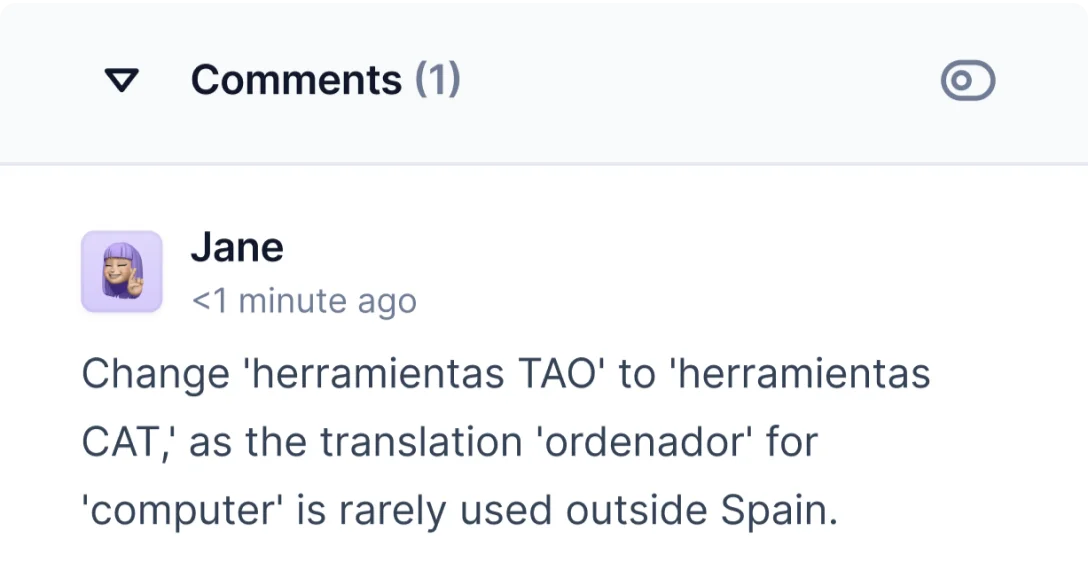
-
Streamlined file sharing: Share project files and screenshots within the platform.
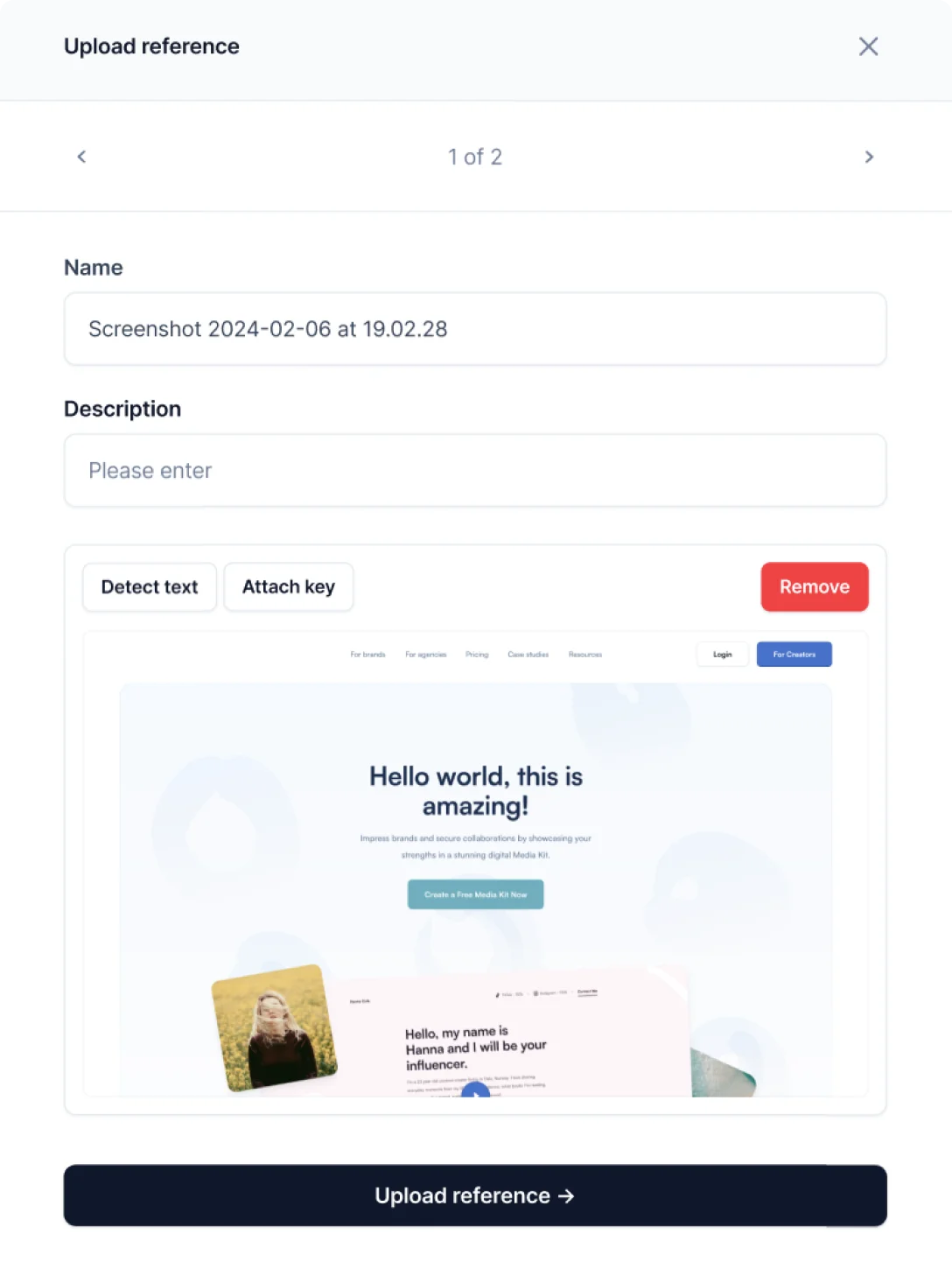
-
Machine translation: Help your translators complete projects fasters using integrated machine translation tools like DeepL and Google Translate.
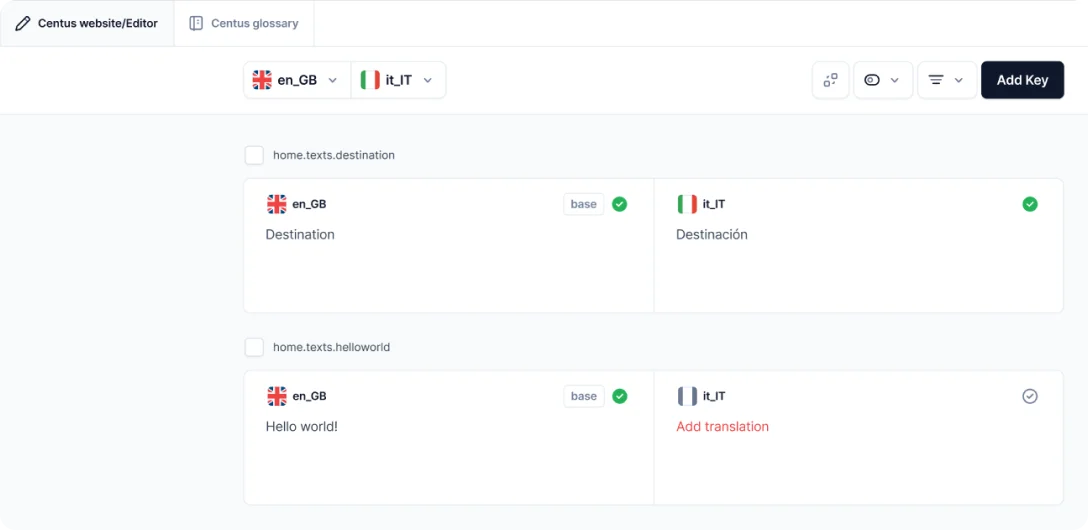
-
Seamless integration: Integrate Centus with popular tools to elevate your existing workflows.
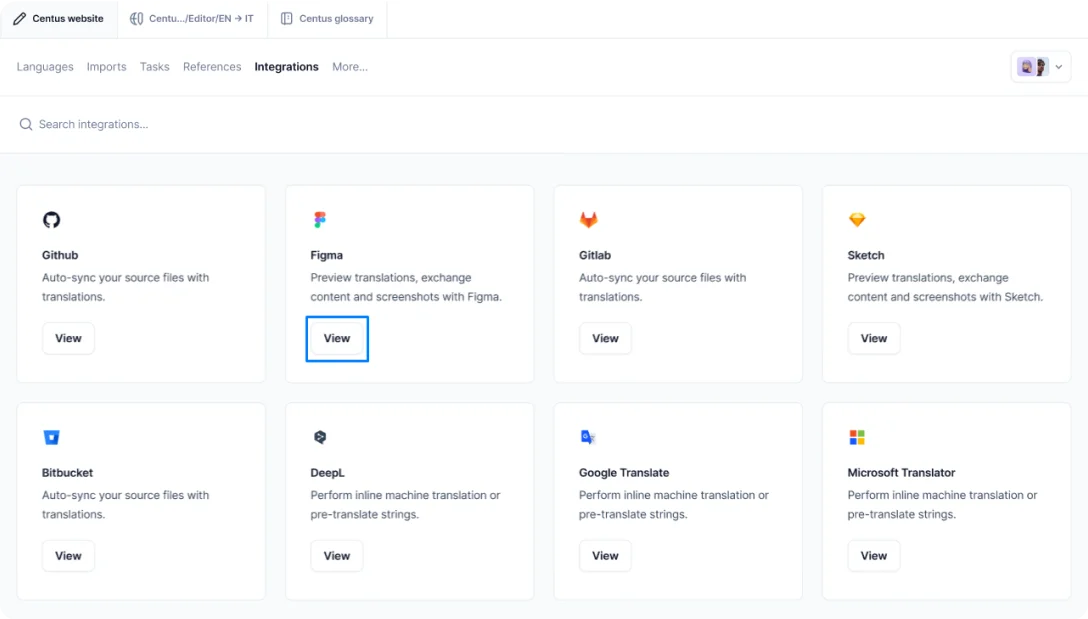
-
Terminology management: Maintain consistent terminology across projects with built-in glossaries or translation memories.

Now that you know how to hire a translator, you can also turn them into your company’s superstar using a translation management system, Centus. Try it now!
Get the week's best content!
By subscribing, you are agreeing to have your personal information managed in accordance with the terms of Centus Privacy Policy ->
Keep learning
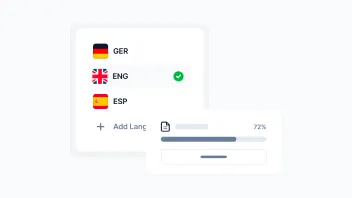
9 min. read
Business Translation Explained with Examples
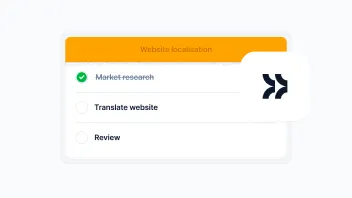
14 min. read
Website Localization: A Beginner’s Guide
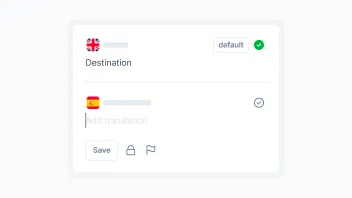
6 min. read
How to Organize Content Translation Process

9 min. read
7 Best Machine Translation Software Tools
7 min. read
Localization Specialist Role and How to Become One

14 min. read